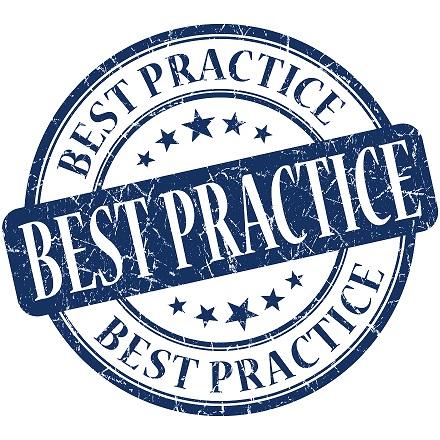In the ever-evolving landscape of global connectivity, the synergy between TURN and anycast has revolutionized the way peer connections operate on a worldwide scale. Through the strategic combination of these technologies, seamless communication and collaboration are now possible across vast distances. Join us as we explore how TURN and anycast are shaping the future of peer connections and unlocking unprecedented potential for global interaction.
Table of Contents
- Understanding the Role of TURN and Anycast in Global Peer Connections
- Maximizing Performance and Reliability through TURN and Anycast Technologies
- Key Considerations for Implementing TURN and Anycast in Peer Connectivity
- Best Practices for Leveraging TURN and Anycast for Seamless Global Peer Connections
- Q&A
- Insights and Conclusions

Understanding the Role of TURN and Anycast in Global Peer Connections
When it comes to ensuring seamless global peer connections, two key technologies play a crucial role: TURN and Anycast. These tools work hand in hand to overcome common challenges in peer-to-peer networking, enabling users to establish reliable connections regardless of their geographic location.
TURN (Traversal Using Relays around NAT) serves as a relay server that facilitates communication between peers behind restrictive firewalls or NAT devices. By relaying data between these peers, TURN ensures that information can flow freely, even in challenging network environments. On the other hand, Anycast is a routing technique that directs traffic to the nearest server within a group of servers offering the same IP address. This approach reduces latency and improves performance for users connecting to servers distributed across the globe.

Maximizing Performance and Reliability through TURN and Anycast Technologies
When it comes to maximizing performance and reliability in peer-to-peer connections on a global scale, two key technologies stand out: TURN and Anycast. By leveraging these technologies, organizations can ensure seamless communication between users across different networks and regions.
TURN (Traversal Using Relays around NAT) enables devices behind a NAT firewall to communicate with peers outside the firewall. This is crucial for maintaining connectivity in scenarios where direct peer-to-peer communication is not possible. On the other hand, Anycast allows for the efficient routing of traffic to the nearest server in a group of servers with the same IP address, reducing latency and improving overall performance. By combining TURN and Anycast technologies, organizations can create a robust infrastructure that can handle peer connections on a global scale with ease.

Key Considerations for Implementing TURN and Anycast in Peer Connectivity
Implementing TURN and Anycast in peer connectivity requires careful consideration to ensure smooth global operation. One key consideration is the choice of TURN server locations. By strategically placing TURN servers around the world, you can minimize latency and provide a better user experience for your peers. Anycast routing can help distribute traffic efficiently to these TURN servers, improving overall performance.
Another important factor to consider is network stability. Implementing TURN and Anycast may introduce additional complexity to your network architecture, so it’s crucial to monitor and maintain network stability to prevent disruptions in peer connectivity. Additionally, having a robust monitoring system in place can help you quickly identify and address any issues that may arise, ensuring seamless peer connections globally.

Best Practices for Leveraging TURN and Anycast for Seamless Global Peer Connections
When it comes to ensuring seamless global peer connections, leveraging TURN and anycast can be a game-changer. By implementing these best practices, you can improve the reliability and performance of your peer-to-peer connections across the world.
Utilizing TURN servers can help to overcome network restrictions and firewalls, allowing for a smoother communication experience. In addition, incorporating anycast routing can help optimize the path for data transmission, reducing latency and enhancing the overall user experience. By combining these two technologies, you can create a robust and efficient peer connection network that spans the globe.
Q&A
Q: What is TURN and anycast?
A: TURN (Traversal Using Relays around NAT) is a protocol used to assist peers in establishing peer-to-peer connections when direct connections are not possible due to network address translation (NAT). Anycast is a networking technique that enables multiple devices to share the same IP address.
Q: How do TURN and anycast work together to make peer connections work globally?
A: Anycast allows TURN servers to be distributed across multiple locations, providing low-latency connections to peers around the world. This helps in creating efficient peer-to-peer connections globally.
Q: Why is it important for peer connections to work globally?
A: In today’s interconnected world, it is crucial for peer connections to work globally to facilitate communication, file sharing, and other collaborative activities across different regions and time zones.
Q: What are some challenges in implementing TURN and anycast for global peer connections?
A: One of the challenges is ensuring reliable and secure connections between peers while maintaining optimal network performance. Another challenge is coordinating the setup and management of multiple TURN servers across different geographical locations.
Q: What are the potential benefits of using TURN and anycast for global peer connections?
A: By leveraging TURN and anycast, organizations can improve the reliability and performance of their peer-to-peer communication networks, leading to enhanced user experiences and increased productivity. Additionally, these technologies can help reduce the dependency on centralized servers and improve overall network efficiency.
Insights and Conclusions
TURN and anycast technology have revolutionized the way peer connections work globally. By optimizing routing paths and minimizing latency, these tools have paved the way for seamless and reliable communication across the world. As we continue to push the boundaries of technology, it is clear that TURN and anycast will play a crucial role in bridging the gaps between users and ensuring a truly interconnected global network. We look forward to seeing how these innovations will continue to shape the future of peer-to-peer communication.










